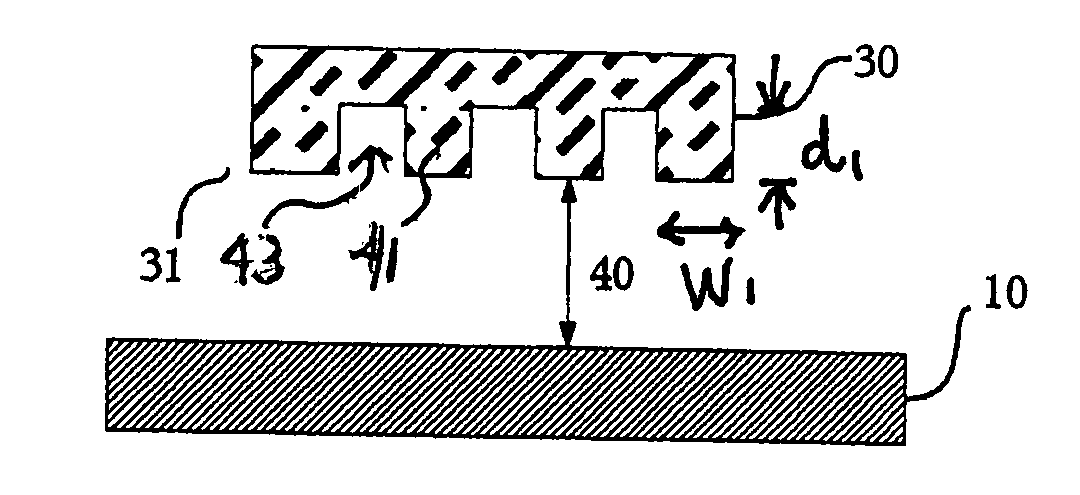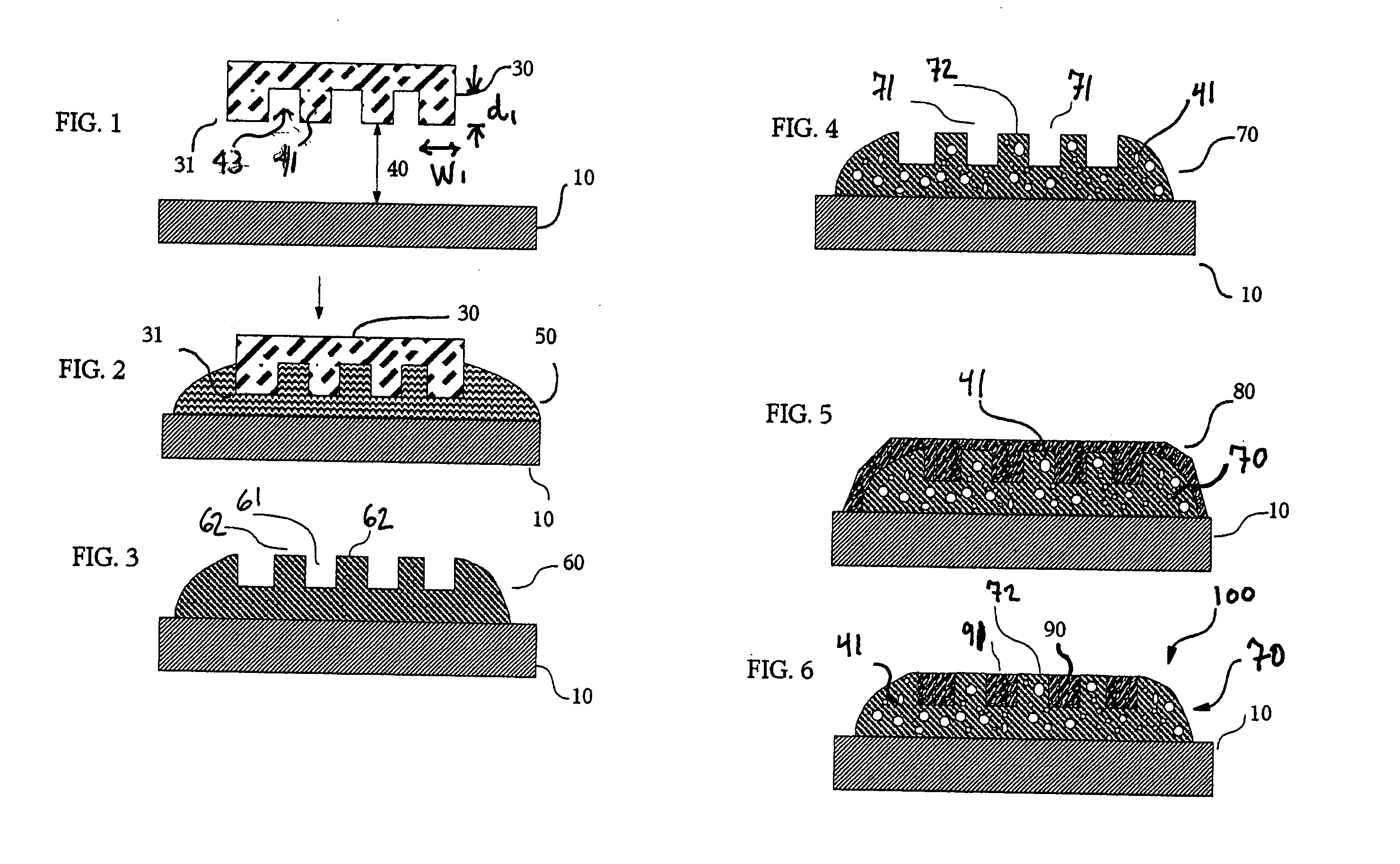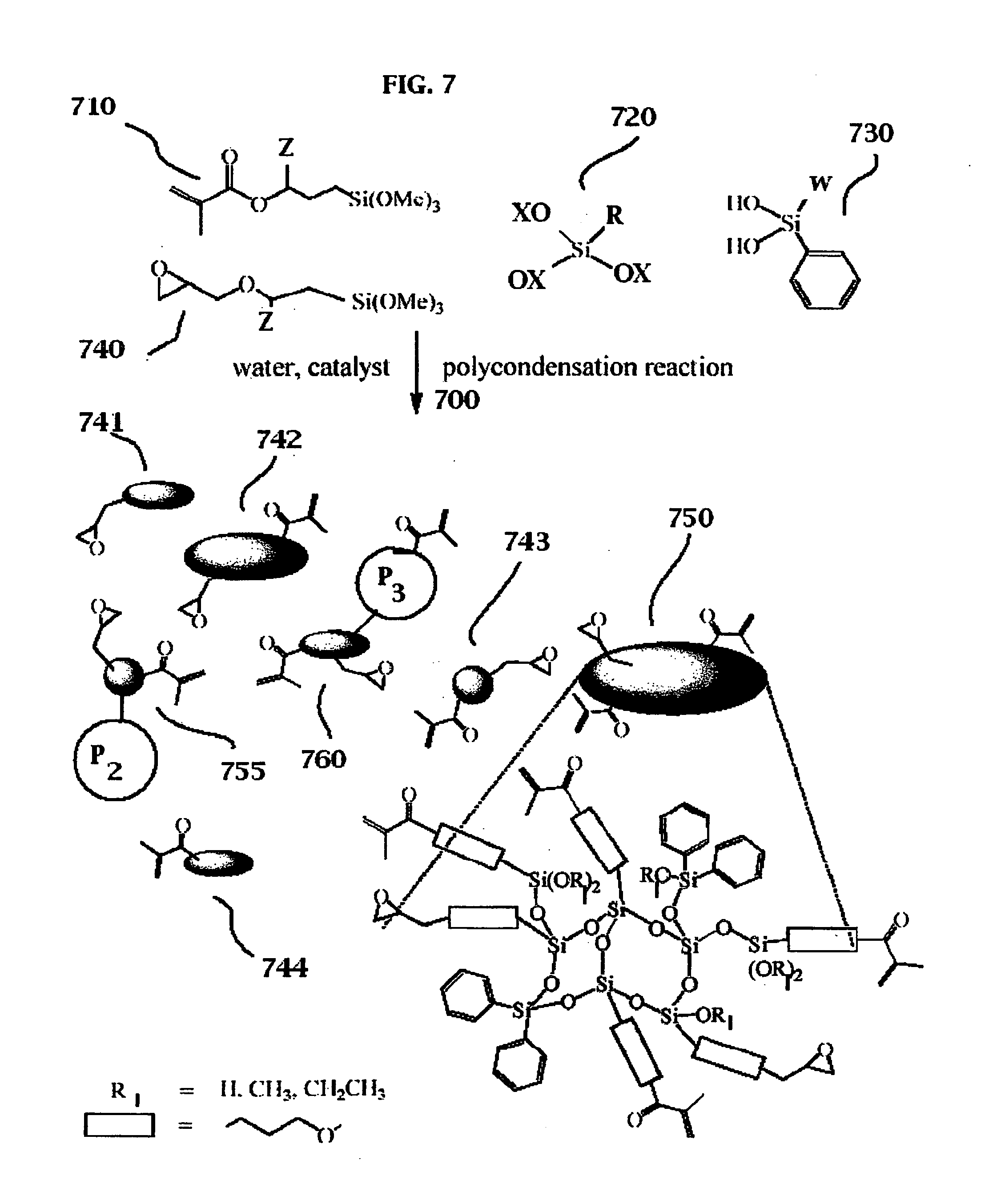Low-k dielectric functional imprinting materials
a dielectric functional and imprinting technology, applied in the direction of photosensitive materials, instruments, photomechanical equipment, etc., can solve the problems of difficult selection or selection of organic materials, significant challenges in the development of appropriate organic polymers, and the complexity of patterning processes, so as to improve the release of cured compositions
- Summary
- Abstract
- Description
- Claims
- Application Information
AI Technical Summary
Benefits of technology
Problems solved by technology
Method used
Image
Examples
example 1
[0049] As a theoretical example of a preferred composition for the polymerizable fluid of the instant invention, 79.5 g ORMOCER b59 UV curable organic modified silicate, 20 g TONE 0301 as the porogen and 0.5 g FC4432 of fluorosurfactant are mixed together. As ORMOCER b59 is available from the manufacturer premixed with the appropriate photo initiator the above composition can be used for imprint molding as described above when exposed to UV radiation of a wavelength that includes 365 nm. “TONE” 0310 is a poly(caprolactone) polyol (CAS Reg. No. 37625-56-2) having a relatively low-melting point and is tri-functional (3 —OH groups per molecule) with a number average molecular weight of about 900, and a hydroxyl number (mg KOH / g) of 187.0, being available from the Dow Chemical Company (Midland, Mich.). Other polycaprolactones deemed suitable without undue experimentation include CAPA 3031, which is available from Solvay Caprolactones (Warrington, Cheshire, United Kingdom).
[0050] It is ...
PUM
| Property | Measurement | Unit |
|---|---|---|
| Percent by mass | aaaaa | aaaaa |
| Percent by mass | aaaaa | aaaaa |
| Mass | aaaaa | aaaaa |
Abstract
Description
Claims
Application Information
 Login to View More
Login to View More - R&D
- Intellectual Property
- Life Sciences
- Materials
- Tech Scout
- Unparalleled Data Quality
- Higher Quality Content
- 60% Fewer Hallucinations
Browse by: Latest US Patents, China's latest patents, Technical Efficacy Thesaurus, Application Domain, Technology Topic, Popular Technical Reports.
© 2025 PatSnap. All rights reserved.Legal|Privacy policy|Modern Slavery Act Transparency Statement|Sitemap|About US| Contact US: help@patsnap.com



